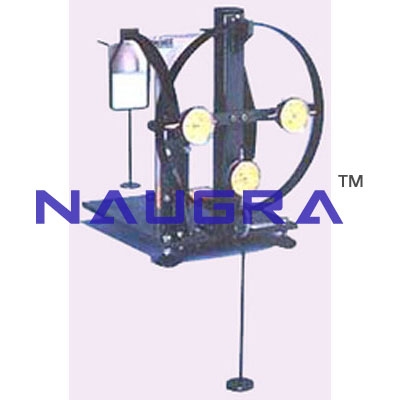- Civil Lab Mechanical Lab Engineering Lab Equipments
- sales@didacticlabequipments.com

CAT NO: DIDACTICNLE-Export-053011
Deflection of Curved Bars Apparatus- Engineering Lab Training Systems.
Features
Universal machine
Compact, bench mounted
Four specimens supplied: Circular ring,
Semi-circle, Quadrant and Davit
Measurement of oscillation frequency
Measurement of horizontal and vertical deflections by dial gauges
Demonstrates strain energy concepts
Three year warranty
Range of Experiments
To
experimentally determine the vertical and horizontal deflections of
various curved bars whose cross sectional dimensions are small compared
with the bar radius.
To compare with theoretical estimates using strain energy theories such as Castigliano's first theorem.
Description
The
theoretical deflections of curved shapes are most easily found by
applying strain energy ideas, such as Castigliano's first theorem. The
shapes chosen provide a relatively easy introduction to the use of such
techniques, which students often seem to find difficult to grasp.
A
bench mounted base supports a curved bar formed into a ring,
semi-circle or quadrant/davit. Loads are applied by specially designed
weight hangers so that the specimen bends. Horizontal and vertical
deflections are measured by dial gauges rigidly attached to the base.
The bars can be readily changed and the position of the dial gauges
relocated to measure the deflections of the new configuration. Bars,
weight hangers and a set of weights are supplied.
This equipment
is part of a range designed to both demonstrate and experimentally
confirm basic engineering principles. Great care has been given to each
item so as to provide wide experimental scope without unduly
complicating or compromising the design. Each piece of apparatus is
self-contained and compact. Setting up time is minimal, and all
measurements are made with the simplest possible instrumentation, so
that the student involvement is purely with the engineering principles
being taught.
A complete instruction manual is provided
describing the apparatus, its application, experimental procedure and
typical test results.
